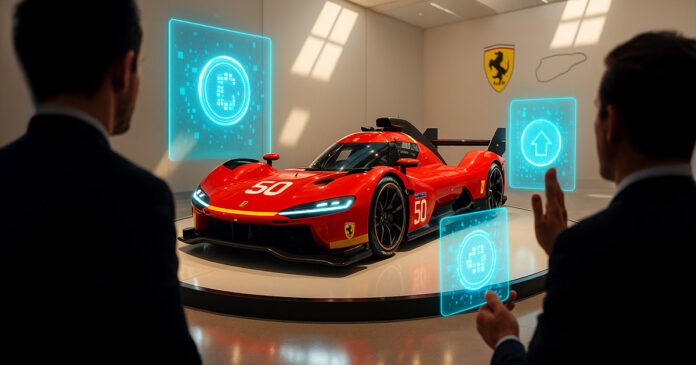Introduction to Ferrari’s Tokenized Luxury
Ferrari, the renowned Italian automaker, is venturing into the crypto space with an exclusive offering for its elite clientele. The company plans to issue a “Token Ferrari 499P,” allowing its 100 most esteemed customers to bid on a Le Mans winning car. This innovative approach combines luxury and blockchain technology, enabling the ownership of a piece of Ferrari history through digital tokens. However, it raises questions about the potential impact on Bitcoin and Ethereum liquidity.
Understanding the Tokenization Process
The tokenization process involves dividing a rare asset, in this case, a Ferrari car, into digital tokens that can be traded on a platform. This concept has been explored in various luxury markets, including art, real estate, and collectibles. Proponents argue that tokenization can turn illiquid assets into tradable investments, increasing their accessibility and liquidity. However, the reality is that many tokenized luxury projects struggle to achieve significant liquidity and trading volume.
Luxury and Blockchain: A Cautious Approach
Ferrari’s foray into crypto is not new, as the company began accepting Bitcoin, Ethereum, and USDC for car purchases in 2023. However, this experience was more of a payment trick than a liquidity event, as the company never actually owned any crypto. The upcoming 499P auction, run jointly with fintech company Conio, follows a similar pattern, with the process likely to remain off-chain and only open to Ferrari’s “hyperclub” of pre-vetted millionaires.
Challenges in Tokenized Luxury
Tokenized luxury projects often face challenges in achieving liquidity and trading volume. The CurioInvest’s 2015 Ferrari F12 TDF, split into 1.1 million ERC-20 tokens, is a prime example. Despite the initial hype, the tokens are now trading at around $0.15 on negligible volume. Similarly, the first tokenized art sale, Maecenas’ Warhol auction in 2018, attracted $1.7 million in bids but saw little secondary trading afterward.
Regulatory and Technical Hurdles
The tokenization of luxury assets is also hindered by regulatory and technical hurdles. Strict compliance with Know Your Customer (KYC) and Anti-Money Laundering (AML) regulations can limit the accessibility and liquidity of these tokens. Additionally, the lack of standardization and interoperability between different blockchain platforms and ecosystems can make it difficult for tokenized assets to be traded and exchanged seamlessly.
Conclusion and Future Prospects
In conclusion, while Ferrari’s tokenized luxury project is an innovative approach to combining luxury and blockchain, it is unlikely to have a significant impact on Bitcoin and Ethereum liquidity. The project’s exclusivity and limited accessibility will likely restrict its potential for widespread adoption and trading volume. However, as the technology and regulatory landscape continue to evolve, we may see more tokenized luxury projects emerge, potentially driving growth and innovation in the crypto market. For more information, visit https://cryptoslate.com/elite-ferrari-clientele-to-bid-on-le-mans-race-car-with-digital-tokens/

